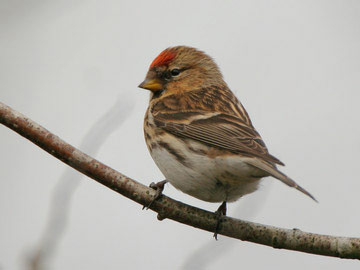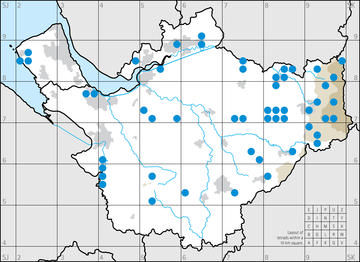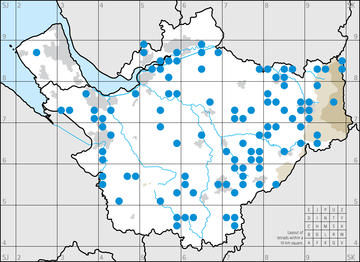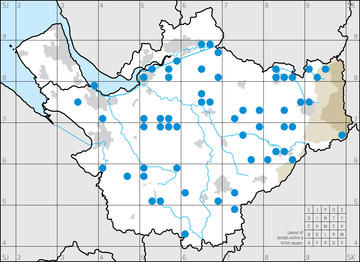
Lesser Redpoll © Steve Round
Lesser Redpolls’ winter distribution is dictated largely by the availability of birch seeds, with alder as an acceptable substitute, so they undertake long distance movements to find them. Southerly migration within Britain is probably annual, and Cheshire and Wirral ringers have many examples of birds from Scottish sites moving through or wintering in the county. Some birds move on to continental Europe in some years (Migration Atlas).
As with other woodland finches, especially the Siskin, their winter occurrence shows a clear biennial pattern. Fieldworkers for this Atlas were not required to submit repeat records for tetrads in which the species had already been found, but many surveyors did do so, and the differences between the three winters of this survey were striking, as seen in the three maps for the three separate winters: in winter 2004/ 05 Lesser Redpolls were recorded in 52 tetrads; in 2005/ 06 they were found in 101 tetrads; and in 2006/ 07 observers reported them from 58 tetrads.
The species is much more widespread than in the breeding season, with larger flocks, the biggest reported being 80 birds. Woodland (42% of habitat records) and human sites (20%) were occupied in much the same proportions as in the breeding season, with fewer (11%) in scrub and 19% of habitat codes from birds frequenting farmland. Lesser Redpolls were often found in waterside locations, usually easier to hear than to see as they kept to the tops of trees, and the lines of some rivers show up in the distribution map, especially the Dee and Mersey. In the east of the county, Lesser Redpolls are widely distributed, but, as in the breeding season, this is now a scarce species on Wirral.
Coward (1910) noted winter flocks sometimes numbering from 50 to 100 birds or more, usually in birches and alders, much the same as nowadays. Bell (1962) described the species as a ‘widely distributed resident, and a passage migrant and winter resident in small numbers’: depending on the meaning of the terms ‘resident’ and ‘winter resident’, which are not defined in the book, this seems the opposite way round to the present status. If true, this suggests that perhaps Redpolls have undergone a long-term variation in abundance or migratory tendency.

Lesser Redpoll in winter 2004/05.

Lesser Redpoll in winter 2005/06.

Lesser Redpoll in winter 2006/07.
Sponsored by Michael Miles

